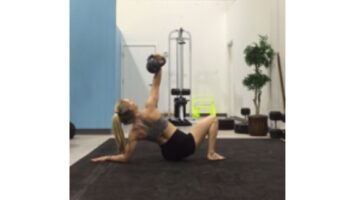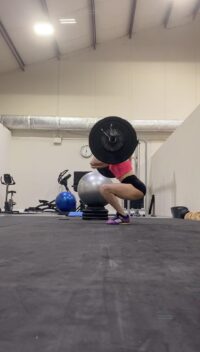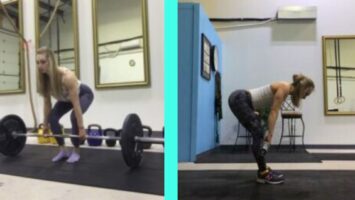
Bench Press vs. Push ups
Have you ever wondered how push ups stack up to the bench press? In this article, we will discuss bench press vs. push ups so you can decide whether to include either exercise in your resistance training program.
Read more: Bench Press Vs. Push ups
Benefits of the Bench Press
Great Strength Builder: On the bench press, you can work up to loads that greatly exceed your bodyweight. This makes the bench press a great exercise to build strength in your chest, triceps and shoulders.
Track Progress: With the bench press, you can easily track your progress by recording the weight you use each session. Adding weight over time indicates that you have gained strength, improved your technique, or improved rate coding or neural output at this movement.
Good Predictor of Upper Body Strength: The bench press is a good predictor of your overall upper body strength. Since this movement requires all your upper body muscles to work together, it’s a good indicator of strength in your pecs, shoulders, triceps, and lats.
Negatives of the Bench Press
Hard on Shoulders: Depending on your technique, grip width, back arch, injury history and shoulder anatomy, the bench press might cause or exacerbate shoulder injuries.
You must keep your shoulders retracted to avoid impingement syndromes in the bench press. However, keeping your scapula pinned down while you perform the horizontal pressing motion potentially compromises full shoulder function in the long term.
If you want to reduce your risk of shoulder injuries while performing the bench press, learn and practice good technique. Respect your limits and add other exercises like rows and overhead press into your routine to balance the demands of your bench press workouts.
Lack of Abdominal Engagement: Compared to the push up exercise, the bench press does not recruit your abs or hip flexors as much. For those looking for a more full body exercise, the push up might be a better choice.
Highly Technical: This exercise requires an initial time investment to learn proper bench press technique. Setting the start position, arching the upper back, setting the feet flat, learning proper leg drive, and deciding on a grip width and bar placement all require some learning and experimentation. This exercise actually requires you to invest significant effort to learn proper technique and to find an individual style that works for you. Consider working with a qualified strength coach to learn and perfect your technique.
Cost and Equipment: To perform a bench press you need a bench, power rack, training bar and plates of various weights to add to the bar. You might not have easy access to all that equipment on a regular basis, and purchasing that much equipment might be expensive.
Benefits of the Push up
Free and Versatile: You can perform push ups at home, on vacation or in your office. This exercise requires no equipment and you can perform it anytime without needing to set up any (costly) equipment.
Easy on Shoulders: Unlike the bench press, push ups allow your shoulder blades to move freely throughout the movement. For those with prior shoulder injuries, push ups might be a better choice.
Core Involvement: Push ups require your abs, glutes and hip flexors to work to keep your body in line during the motion. Push ups might work your abs as much as a plank. For those who want a more complete workout with just a few exercises, push ups might fit the bill.
Scalable: If you can’t yet do push ups on the floor, you can do them on a wall or elevated bar. If push ups no longer challenge you, you can add weight, pauses, or try movement variations that feel more difficult.
Negatives of the Push up
Limited Strength Development: Push ups only require you to lift about 50-75 percent of your bodyweight. Once you get good at them, it’s more difficult to add significant weight or find push up variations that feel difficult enough. In contrast, you can always add weight to your bench press to accommodate your continuous progress.
Wrist Injuries: People with wrist injuries might have pain supporting their body weight in the push up. However, you can always support your hands on dumbbells if you have a wrist injury.
Are push-ups as effective as bench press?
The bench press is generally more effective to build chest and upper body strength. However, if you continue to overload your push up workouts, push ups can be just as effective as bench presses.
Ultimately, the effectiveness of each exercise depends on the effort you expend. As long as you use good technique on either exercise and push yourself, both exercises are pretty effective at increasing upper body strength and muscle endurance.
Can weighted push-ups replace bench?
As long as you don’t have goals to compete in powerlifting or maximize your upper body strength, you can probably replace bench press with weighted push ups. You will still have to make sure you continue to add weight, reps and/or sets on your push up workouts to continue to improve your overall pressing strength.
In summary, if your goal is to build a reasonable level of strength and general fitness, than (weighted) push ups may replace bench press workouts.
If you want to optimize your upper body strength over the long term, you should still incorporate the bench press into your strength training program.
Ultimately, you can decide whether to perform push ups or bench press based on your own goals and needs.
Continue reading Bench Press Vs. Push ups








